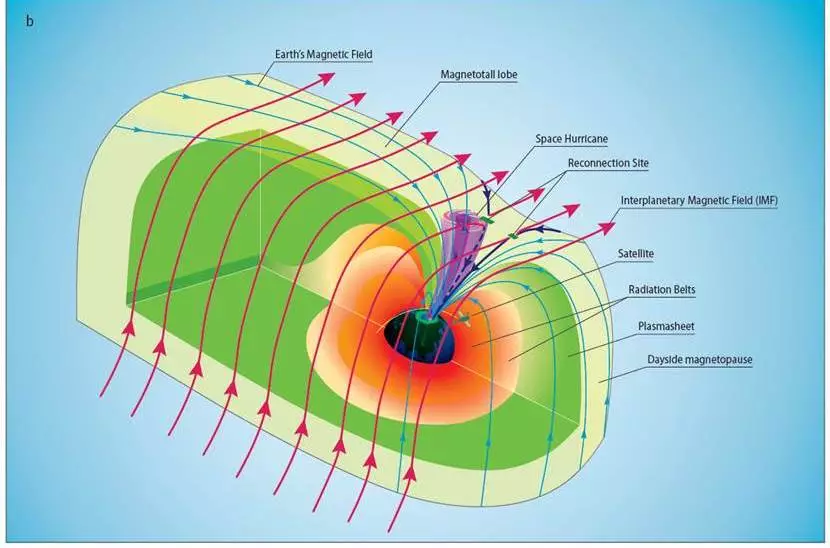Scientists have found evidence of a “space hurricane” for the first time. The storm, made up of swirling clouds of plasma, raged in Earth’s upper atmosphere for hours, dumping huge amounts of electrons like rain in a system that resembles a regular hurricane.
The storm took place on August 20, 2014, in the ionosphere above the North Pole. It spanned about 1,000 km (620 miles) wide, and was made up of several spiral arms spinning in an anticlockwise direction. It raged for about eight hours before slowly dissipating.
The mechanisms and structure of the storm bore a striking resemblance to the familiar hurricanes that occur in the lower atmosphere – but rather than water, it was a swirling plasma of electrons. Strong flow shears whipped around the edges, while the center, or “eye” of the storm, was much calmer. Due to these similarities, the team dubbed it a “space hurricane.”
“Until now, it was uncertain that space plasma hurricanes even existed, so to prove this with such a striking observation is incredible,” says Mike Lockwood, an author of the study describing the event. “Tropical storms are associated with huge amounts of energy, and these space hurricanes must be created by unusually large and rapid transfer of solar wind energy and charged particles into the Earth’s upper atmosphere.”

Although it occurred more than six years ago, this space hurricane was only recently discovered by an international team of scientists analyzing old satellite data. Observations were collected from four meteorological satellites operated by the US Department of Defense, then 3D magnetosphere modeling was used to create a three dimensional image of the storm. Other data from satellites and radar was analyzed to confirm the details of the event.
Interestingly, the space hurricane occurred during a period of low geomagnetic activity. The team says that this suggests the storms could be relatively common, not just above Earth but across other planets throughout our solar system and beyond.
“Plasma and magnetic fields in the atmosphere of planets exist throughout the universe, so the findings suggest space hurricanes should be a widespread phenomena,” says Lockwood.
The researchers say that understanding the mechanisms of space hurricanes is important for improving our monitoring of space weather, which can affect satellites, GPS and other electronics.
The research was published in the journal Nature Communications.
Sources: University of Reading, Shandong University





